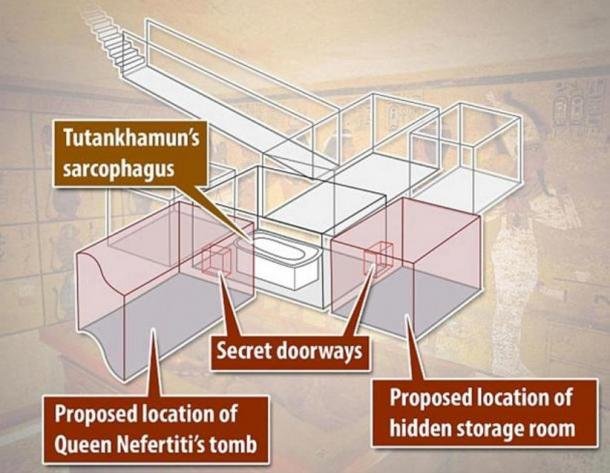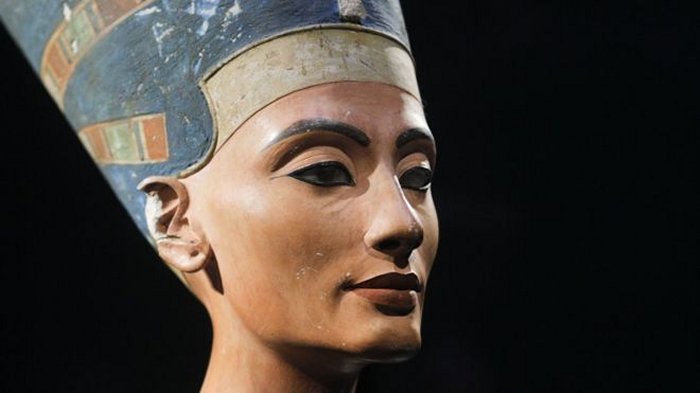MessageToEagle.com – Despite being one of ancient Egypt’s most famous queens, researchers still don’t agree on where Queen Nefertiti was buried. Earlier this year, archaeologist Dr. Nicholas Reeves suggested her long-lost tomb is hidden within the burial chamber of King Tutankhamun. Now his theories may be proven true, as infrared scans have shown the possible location of a concealed chamber.

Discovered in 1922, the tomb of King Tutankhamun is the most intact Egyptian tomb discovered to date and contained close to 2,000 objects. Tutankhamun, more commonly known as King Tut, was Egypt’s boy pharaoh and believed by many to be the son of Nefertiti. Reeves examined high-resolution images of the burial chamber walls and believes he has found evidence of two hidden doorways, one of which may lead to Nefertiti’s tomb.
On the burial chamber wall behind King Tut’s sarcophagus is a painting that depicts Ay —Tutankhamun’s successor and advisor during his reign — performing a ritual known at the Opening of the Mouth on the boy following his death. However, Reeves believes that the painting instead depicts Tutankhamun performing the ritual on Nefertiti. Known pictures of the queen show a trademark of Nefertiti known as an “oromental groove”. This line at the side of her mouth is visible on the figure’s mouth in the painting, leading Reeves to believe the queen is featured in the painting.

King Tut’s reign was cut short when the pharaoh died unexpectedly in 1323 B.C. at the age of 19. Reeves believes that Tut’s tomb was not complete at the time of his passing, so he was hastily buried in what would have originally been Nefertiti’s tomb. Reeves claims are a source of great debate among Egyptologists.
According to Discovery News, Egypt’s Ministry of Antiquity concluded an investigation this week into Reeves proposed findings. The non-invasive investigation was carried out by a team from Cairo University’s Faculty of Engineering and the Paris-based organization Heritage, Innovation and Preservation. Using thermal imaging to measure the temperature of the tomb’s walls, the team spent 24-hours investigating inside the pharaoh’s tomb. Preliminary analysis shows there is a temperature difference in one area of the tomb’s northern wall — signaling a potential hidden chamber.
National Geographic reports that “according to Mamdouh el-Damaty, the Minister of Antiquities, the preliminary analysis indicates the presence of an area different in its temperature than the other parts of the northern wall. One possible explanation is that the variation in temperature is, in effect, an infrared shadow of an open area behind the wall.”
However, not everyone is convinced that Nefertiti is in any potential hidden chamber. Frank Rühli, a leading mummy expert, along with a team of international researchers point out that Nefertiti’s may have already been found. In 1898, a mummy was discovered in tomb KV35 in the Valley of the Kings by archaeologist Victor Loret. Genetic analysis of the mummy — known as the “Younger Lady” — indicates the mummy is the mother of Tutankhamun. As such, the researchers believe that if Tut’s tomb contains a hidden chamber, and if that chamber houses a mummy, the mummy could not be Nefertiti.
If a mummy lurks within a potential hidden chamber, it could belong to Tutankhamun’s half sister, Meritation or even the elusive pharaoh Smekhkare. Of course, it’s entirely possible that no such hidden chambers exist. The next step will be to certify the results through a number of follow-up experiments designed to further investigate the temperature variations.
MessageToEagle.com via IFL Science






